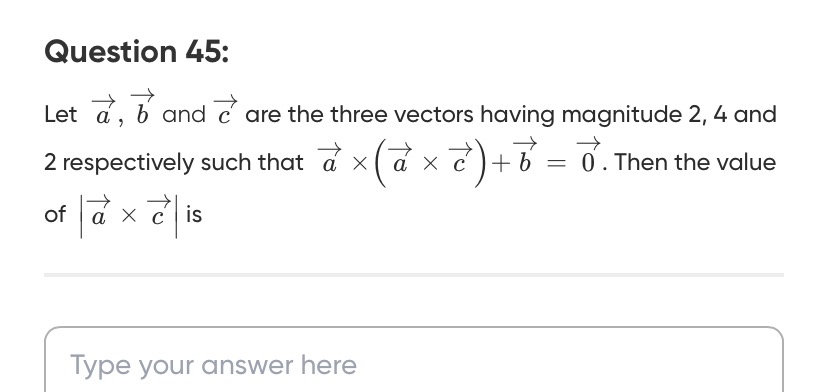Question
Question: Let $\overrightarrow{a}$, $\overrightarrow{b}$ and $\overrightarrow{c}$ are the three vectors having...
Let a, b and c are the three vectors having magnitude 2, 4 and 2 respectively such that a×(a×c)+b=0. Then the value of ∣a×c∣ is

2
Solution
The given vector equation is a×(a×c)+b=0. This can be rewritten as a×(a×c)=−b.
Let X=a×c. The equation becomes a×X=−b.
By the definition of the cross product, the vector a×X is perpendicular to a. Since a×X=−b, it implies that −b is perpendicular to a. Consequently, b is perpendicular to a.
Now, we take the magnitude of both sides of the equation a×X=−b: ∣a×X∣=∣−b∣ ∣a×X∣=∣b∣
The magnitude of the cross product a×X is given by ∣a∣∣X∣sinϕ, where ϕ is the angle between a and X. Since a×X is perpendicular to a, the angle ϕ must be 90∘ (or 270∘). In either case, ∣sinϕ∣=1. Therefore, ∣a×X∣=∣a∣∣X∣.
Substituting this back into the magnitude equation: ∣a∣∣X∣=∣b∣
Now, substitute X=a×c: ∣a∣∣a×c∣=∣b∣
We are given the magnitudes ∣a∣=2 and ∣b∣=4. 2∣a×c∣=4
Solving for ∣a×c∣: ∣a×c∣=24 ∣a×c∣=2
